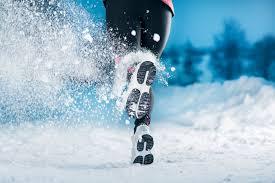You can drink some hot cocoa. You can wear your thermal underwear, build a fire in the fireplace, do shots of whiskey or turn the thermostat up. All of these strategies will help you take the edge off the cold weather. But the most authentic body warming technique to get yourself and keep yourself warm has always been and always will be exercise.
Put your hands on your cheeks right now. Are your fingers cold? Try 20 push ups and check your cheeks once again -- I bet those fingers are warmer.
"If you can't walk a quarter mile in five minutes, the chance that you'll be dead in three years is three times higher than if you can. It's a big deal." Oprah's guru of health, Dr. Oz, said this one day last season. It's a powerful statement.
Exercise will keep you alive and alert for longer than if you don't do it. That should be your intrinsic reason for exercising, but if not, you can do it to just warm yourself up; Both motivations get the job done.
When the temperature drops below zero, one way to keep your inner thermostat revved up is through exercise.
Getting to the gym is more challenging in the winter, but if you can break a sweat on the days it falls into the single digit weather zone, then your body will thank you.
Your mind will also thank you. If you are prone to the winter doldrums, exercise will help. A Duke University study found a direct relationship between exercise and an increased amount of serotonin, which reduces depression. When your body has to work harder to stay warm, it elevates your endorphin production. This triggers the release of seratonin and dopamine -- the happy hormones.
It's good for your skin too. When the temperature drops, my skin starts feeling like sandpaper. But if I exercise, my skin feels less dry. But be certain to rehydrate, even if you don't feel like you broke much of a sweat. Drier air means drier bodies, so don't wait to feel thirsty to drink more water.
Aim for three liters on the days you exercise. In colder weather, you won't feel as thirsty, so monitor how much you drink by placing your day's water supply in bottles on the kitchen counter and be sure to finish it, thirsty or not. You know you are drinking enough water if you have to pee within twenty minutes after finishing your workout.
There's also a silver lining in being cold. Working out in the winter can help you burn more calories than other times of the year. Studies have shown that shivering and feeling chilly can burn slightly more fat than when you feel warm.
The next time that you are tempted to skip your winter workout, remember that beach bodies are built in the winter.
